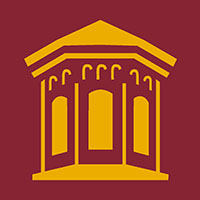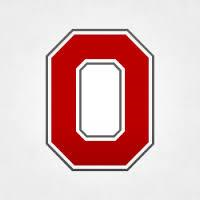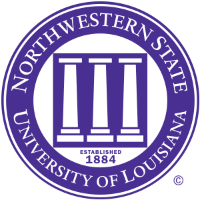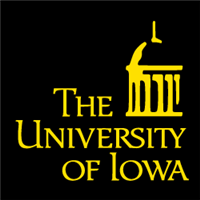What do they do?
Take x-rays and CAT scans or administer nonradioactive materials into patient's bloodstream for diagnostic or research purposes. Includes radiologic technologists and technicians who specialize in other scanning modalities.
Also known as:
Computed Tomography Radiologic Technologist (CT RT), Computed Tomography Technologist (CT Tech), CT Scan Tech (Computed Tomography Scan Technologist), Diagnostic Radiologic Technologist (DRT), Imaging Technologist (Imaging Tech), Mammographer, Mammography Technologist (Mammography Tech), Radiographer, Radiologic Technician (RAD Tech), Radiologic Technologist (RT), Radiological Technologist, Radiology Technician (Radiology Tech), Radiology Technologist (RT), Registered Radiographer, Registered Radiologic Technologist (RT (R)), Ultrasound Technologist (Ultrasound Tech), X-Ray Technician (X-Ray Tech), X-Ray Technologist (X-Ray Tech)
-
6.4%
Change
Ranks #42 in job growth rate710Job Openings
Ranks #7 in net job growth
-
Ohio State University-Main Campus
Columbus, OH
-
University of Iowa
Iowa City, IA
-
University of Mississippi
University, MS
-
Virginia Commonwealth University
Richmond, VA
-
Indiana University-Purdue University-Indianapolis
Indianapolis, IN
Looking for colleges that offer a specific major? Use the College Match Tool to find your best-matched schools and discover your estimated Net Price!
- Doctorate or Professional Degree (1%)
- Master's degree (4%)
- Bachelor's degree (23%)
- Associate's degree (50%)
- Some college, no degree (16%)
- High school diploma equivalent (6%)
- Less than high school diploma (1%)
People in this career often have these skills:
- Active Listening - Giving full attention to what other people are saying, taking time to understand the points being made, asking questions as appropriate, and not interrupting at inappropriate times.
- Social Perceptiveness - Being aware of others' reactions and understanding why they react as they do.
- Reading Comprehension - Understanding written sentences and paragraphs in work-related documents.
- Speaking - Talking to others to convey information effectively.
- Service Orientation - Actively looking for ways to help people.
- Monitoring - Monitoring/Assessing performance of yourself, other individuals, or organizations to make improvements or take corrective action.
People in this career often know a lot about:
- Medicine and Dentistry - Knowledge of the information and techniques needed to diagnose and treat human injuries, diseases, and deformities. This includes symptoms, treatment alternatives, drug properties and interactions, and preventive health-care measures.
- Customer and Personal Service - Knowledge of principles and processes for providing customer and personal services. This includes customer needs assessment, meeting quality standards for services, and evaluation of customer satisfaction.
- English Language - Knowledge of the structure and content of the English language including the meaning and spelling of words, rules of composition, and grammar.
- Computers and Electronics - Knowledge of circuit boards, processors, chips, electronic equipment, and computer hardware and software, including applications and programming.
- Administrative - Knowledge of administrative and office procedures and systems such as word processing, managing files and records, stenography and transcription, designing forms, and workplace terminology.
- Education and Training - Knowledge of principles and methods for curriculum and training design, teaching and instruction for individuals and groups, and the measurement of training effects.
- Public Safety and Security - Knowledge of relevant equipment, policies, procedures, and strategies to promote effective local, state, or national security operations for the protection of people, data, property, and institutions.
People in this career often have talent in:
- Oral Comprehension - The ability to listen to and understand information and ideas presented through spoken words and sentences.
- Problem Sensitivity - The ability to tell when something is wrong or is likely to go wrong. It does not involve solving the problem, only recognizing that there is a problem.
- Near Vision - The ability to see details at close range (within a few feet of the observer).
- Oral Expression - The ability to communicate information and ideas in speaking so others will understand.
- Written Comprehension - The ability to read and understand information and ideas presented in writing.
- Deductive Reasoning - The ability to apply general rules to specific problems to produce answers that make sense.
- Information Ordering - The ability to arrange things or actions in a certain order or pattern according to a specific rule or set of rules (e.g., patterns of numbers, letters, words, pictures, mathematical operations).
- Inductive Reasoning - The ability to combine pieces of information to form general rules or conclusions (includes finding a relationship among seemingly unrelated events).
- Speech Recognition - The ability to identify and understand the speech of another person.
- Speech Clarity - The ability to speak clearly so others can understand you.
People in this career often do these activities:
- Adjust settings or positions of medical equipment.
- Operate diagnostic imaging equipment.
- Prepare medical supplies or equipment for use.
- Position patients for treatment or examination.
- Monitor patient conditions during treatments, procedures, or activities.
- Inform medical professionals regarding patient conditions and care.
- Explain medical procedures or test results to patients or family members.
- Verify that medical activities or operations meet standards.
- Check quality of diagnostic images.
- Analyze patient data to determine patient needs or treatment goals.
- Prepare medications or medical solutions.
- Process x-rays or other medical images.
- Create advanced digital images of patients using computer imaging systems.
- Maintain medical facility records.
- Assist healthcare practitioners during examinations or treatments.
- Prepare reports summarizing patient diagnostic or care activities.
- Record patient medical histories.
- Collect medical information from patients, family members, or other medical professionals.
- Enter patient or treatment data into computers.
- Move patients to or from treatment areas.
- Train medical providers.
- Schedule patient procedures or appointments.
- Perform clerical work in medical settings.
- Examine medical instruments or equipment to ensure proper operation.
- Supervise patient care personnel.
- Assist patients with hygiene or daily living activities.
This page includes data from:

 Occupation statistics: USDOL U.S. Bureau of Labor Statistics Occupational Employment Statistics
Occupation statistics: USDOL U.S. Bureau of Labor Statistics Occupational Employment Statistics









